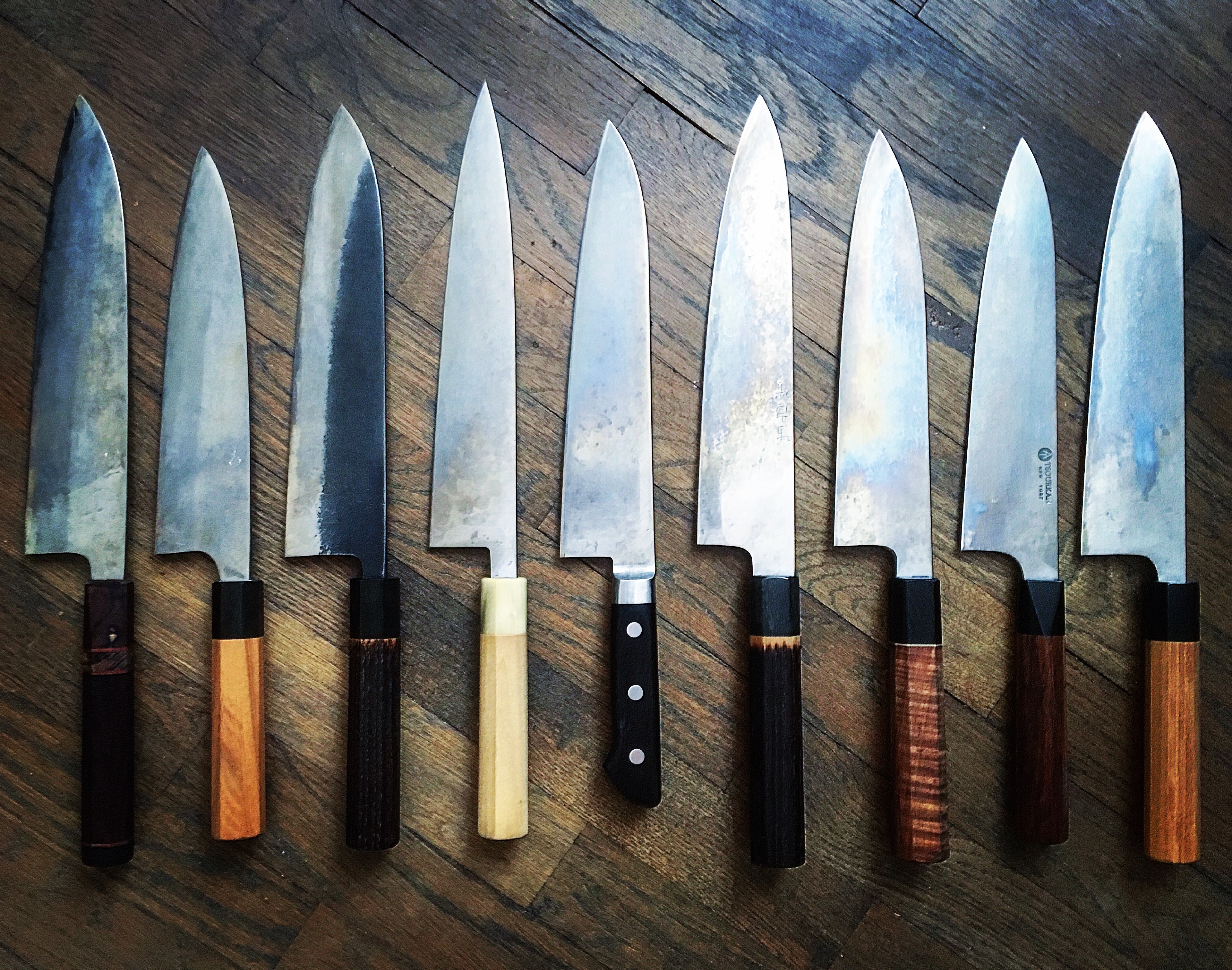DitmasPork
Senior Member
"Workhorse" is a term that seems to be used a lot, without a concise definition of what its definition is. To me, "workhorse gyuto" is commonly used to describe a gyuto that's perceived as heavier, more robust, and an all-around gyuto—though all of those characteristics seem subjective.
Curious on how others here define a "workhorse gyuto"?
• Is a "workhorse gyuto" simply an all-around gyuto that a cook uses to get the bulk of prepping tasks done? Some cooks love lasers, and might consider it their workhorse gyuto.
• Is a "workhorse gyuto" a knife that's particularly robust and tough, capable of enduring the abuse of a busy kitchen? A "beater" might be a good candidate to be a workhorse if just based on toughness.
• Is a "workhorse gyuto" defined by a weight to dimension ratio? Akin to how boxing weight divisions separate super flyweight from bantamweight fighters?
If it's the latter, I'd be interested to know if there's a consensus on weight to length ratio that classifies a gyuto as a workhorse.
Gyutos often referred to as "workhorses" are Watanabe, Gengetsu, Yoshikane SKD, Blazen—as well as some gyutos that have used "workhorse" as a part of the gyuto model name, i.e. Kato workhorse, Kippington workpony, Tsourkan workhorse.
My personal preferences gets me gravitating towards gyutos that fit the "workhorse" label, whatever that definition is.
Below are some of my gyutos, all of which have been called a workhorse by various people. They're quite varied in weight, grind, etc.
Left to right: Mazaki, Mazaki, Kochi, KS, Masamoto HC, Kato workhorse, Kippington workpony, Tsourkan workhorse, Watanabe.

Curious on how others here define a "workhorse gyuto"?
• Is a "workhorse gyuto" simply an all-around gyuto that a cook uses to get the bulk of prepping tasks done? Some cooks love lasers, and might consider it their workhorse gyuto.
• Is a "workhorse gyuto" a knife that's particularly robust and tough, capable of enduring the abuse of a busy kitchen? A "beater" might be a good candidate to be a workhorse if just based on toughness.
• Is a "workhorse gyuto" defined by a weight to dimension ratio? Akin to how boxing weight divisions separate super flyweight from bantamweight fighters?
If it's the latter, I'd be interested to know if there's a consensus on weight to length ratio that classifies a gyuto as a workhorse.
Gyutos often referred to as "workhorses" are Watanabe, Gengetsu, Yoshikane SKD, Blazen—as well as some gyutos that have used "workhorse" as a part of the gyuto model name, i.e. Kato workhorse, Kippington workpony, Tsourkan workhorse.
My personal preferences gets me gravitating towards gyutos that fit the "workhorse" label, whatever that definition is.
Below are some of my gyutos, all of which have been called a workhorse by various people. They're quite varied in weight, grind, etc.
Left to right: Mazaki, Mazaki, Kochi, KS, Masamoto HC, Kato workhorse, Kippington workpony, Tsourkan workhorse, Watanabe.

Last edited:






